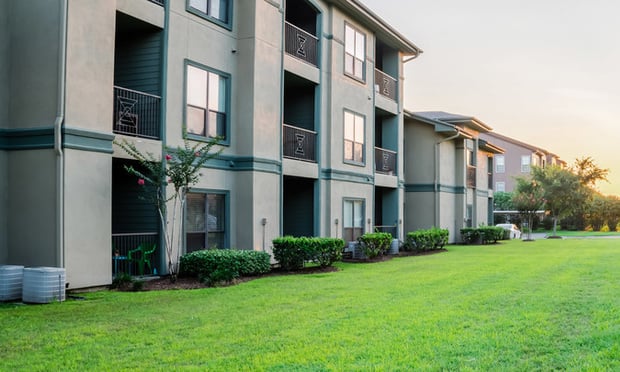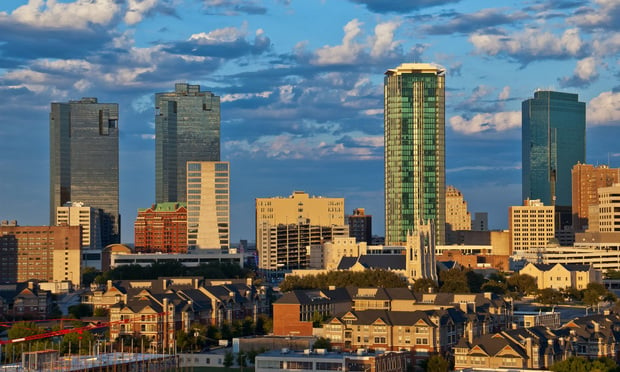DALLAS-Cushman & Wakefield of Texas Inc., rolling out its third quarter numbers, sees promise in an industrial sector that's made a positive quarterly showing for the first time in a year while acknowledging there are still months of gloom overshadowing the office market in Dallas/Fort Worth.
“Historically, industrial has always been our leader out,” Rick Hughes, C&W's senior director in Dallas, tells GlobeSt.com. What's happened in the past, though, might not happen this time around. He says the office market gains that historically follow an industrial uptick by four to six months might not play out this time due to the “jobless recovery” that has a grip on Texas and many other US metros.
If good news is to be found in the Q3 office analysis, it's that “we're losing less blood today than we were losing before,” Hughes says. “It's better than it was.” The reality is more companies are making office space decisions; new companies are forming from the ranks of the unemployed; and Dallas/Fort Worth is still on the radar screen as a relocation portal for all the same reasons as years past.
The overall vacancy ranking has six of 16 office submarkets now above the 30% mark versus one in third quarter 2002. Direct vacancy, though, has just two submarkets pushing above 30%. Sublease stands at 6.9 million sf or one million sf less than a year ago due to a shift on the books to direct availability.
To cut to the quick, the Dallas CBD's 29.4-million-sf inventory has an overall vacancy of 30.5%, up 1.7% from a year ago, whereas the direct vacancy stood at 29.6% at the Q3 close versus 27.2% last year. The direct weighted rental rate is $17.18 per sf; it was $17.46 per sf in 2002.
In the suburban markets, overall vacancy goes from an 11.7% low in Preston Center to a 40.2% high in Far North Stemmons. The direct space accounting has Preston Center at the low end, 10.3%, and Far North Stemmons tipping the scale at 39.4%. Non-CBD rents, based on quotes, range from $12.03 per sf in Southwest Dallas to $22.59 per sf in Preston Center.
The metroplex, year to date, is battling a 3.6-million-sf backslide on the office absorption barometer, about 500,000 sf higher than last year's Q3 total. There's also an uncalculated quantity, and undoubtedly a large amount, of phantom office space out in the market.
In sharp contrast, the industrial sector gained 781,000 sf in the third quarter although the sector's year-to-date is still riding at 2.1 million sf in the red and about 1.1 million sf higher than last year's total. Industrial vacancy is resting overall at 14.1%, up 1.3% from a year ago. Direct vacancy was 12.2% at the Q3 close in comparison to 11.1% at this time last year. The third-quarter rent range is $3.60 per sf to $8.48 per sf. In 2002, it was $3.84 per sf to $8.67 per sf.
Hughes says there are no dynamics prevalent in the marketplace to indicate it will get worse, just like there's no definitive cause that it's going to get better in the near term. But, there are signs, several positive ones, pointing the region in the direction of a recovery, including talk of some large relocations to the region.
“Our analysis indicates the Dallas economy is turning around,” Elizabeth Trocchio, C&W's senior managing director and area leader in Dallas, says in a press release. “We are optimistic that the overall market has begun what, in all likelihood, will be an uphill climb.
Want to continue reading?
Become a Free ALM Digital Reader.
Once you are an ALM Digital Member, you’ll receive:
- Breaking commercial real estate news and analysis, on-site and via our newsletters and custom alerts
- Educational webcasts, white papers, and ebooks from industry thought leaders
- Critical coverage of the property casualty insurance and financial advisory markets on our other ALM sites, PropertyCasualty360 and ThinkAdvisor
Already have an account? Sign In Now
*May exclude premium content© 2024 ALM Global, LLC, All Rights Reserved. Request academic re-use from www.copyright.com. All other uses, submit a request to [email protected]. For more information visit Asset & Logo Licensing.








